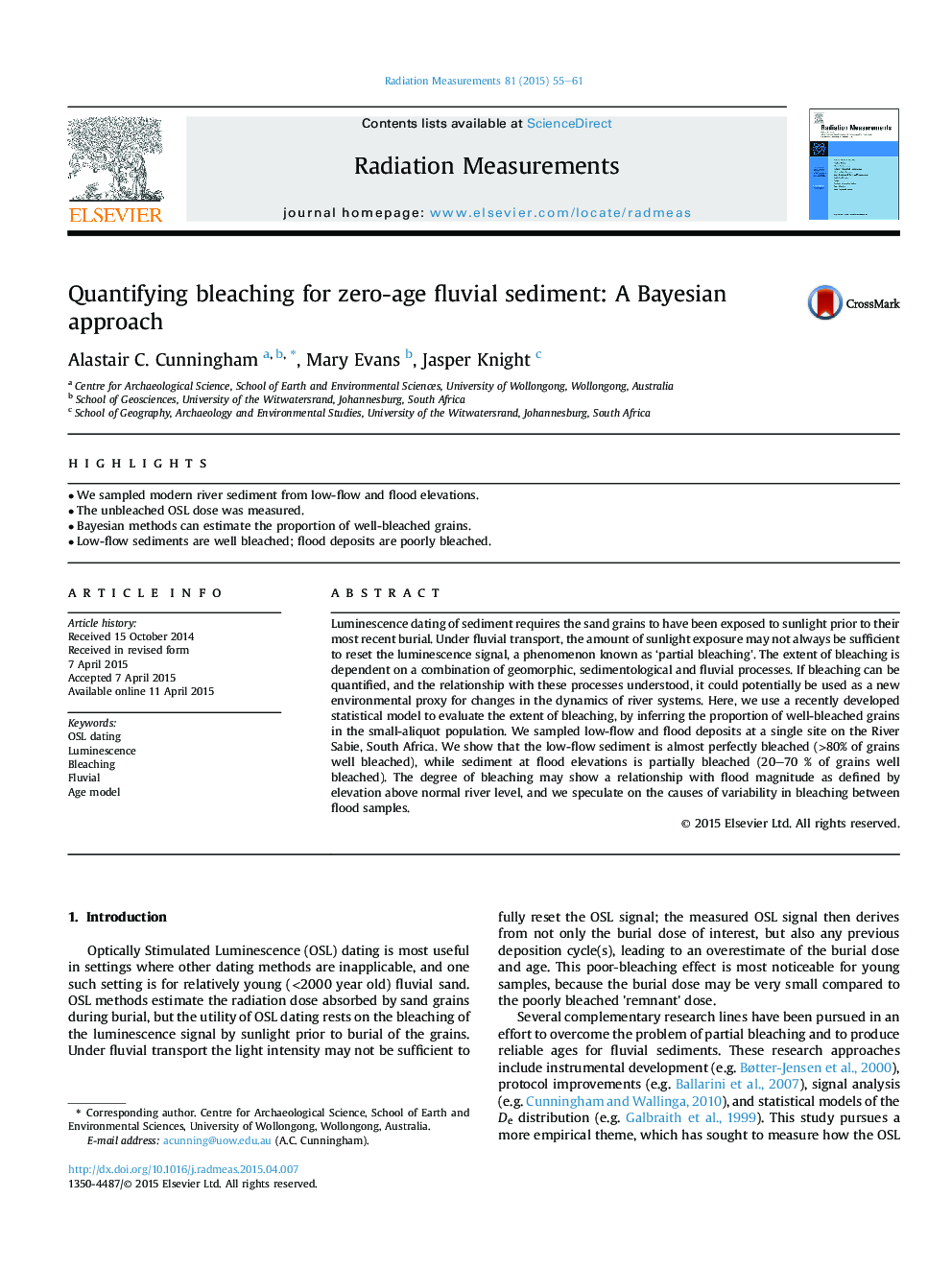| کد مقاله | کد نشریه | سال انتشار | مقاله انگلیسی | نسخه تمام متن |
|---|---|---|---|---|
| 1883254 | 1533409 | 2015 | 7 صفحه PDF | دانلود رایگان |

• We sampled modern river sediment from low-flow and flood elevations.
• The unbleached OSL dose was measured.
• Bayesian methods can estimate the proportion of well-bleached grains.
• Low-flow sediments are well bleached; flood deposits are poorly bleached.
Luminescence dating of sediment requires the sand grains to have been exposed to sunlight prior to their most recent burial. Under fluvial transport, the amount of sunlight exposure may not always be sufficient to reset the luminescence signal, a phenomenon known as ‘partial bleaching'. The extent of bleaching is dependent on a combination of geomorphic, sedimentological and fluvial processes. If bleaching can be quantified, and the relationship with these processes understood, it could potentially be used as a new environmental proxy for changes in the dynamics of river systems. Here, we use a recently developed statistical model to evaluate the extent of bleaching, by inferring the proportion of well-bleached grains in the small-aliquot population. We sampled low-flow and flood deposits at a single site on the River Sabie, South Africa. We show that the low-flow sediment is almost perfectly bleached (>80% of grains well bleached), while sediment at flood elevations is partially bleached (20–70 % of grains well bleached). The degree of bleaching may show a relationship with flood magnitude as defined by elevation above normal river level, and we speculate on the causes of variability in bleaching between flood samples.
Journal: Radiation Measurements - Volume 81, October 2015, Pages 55–61